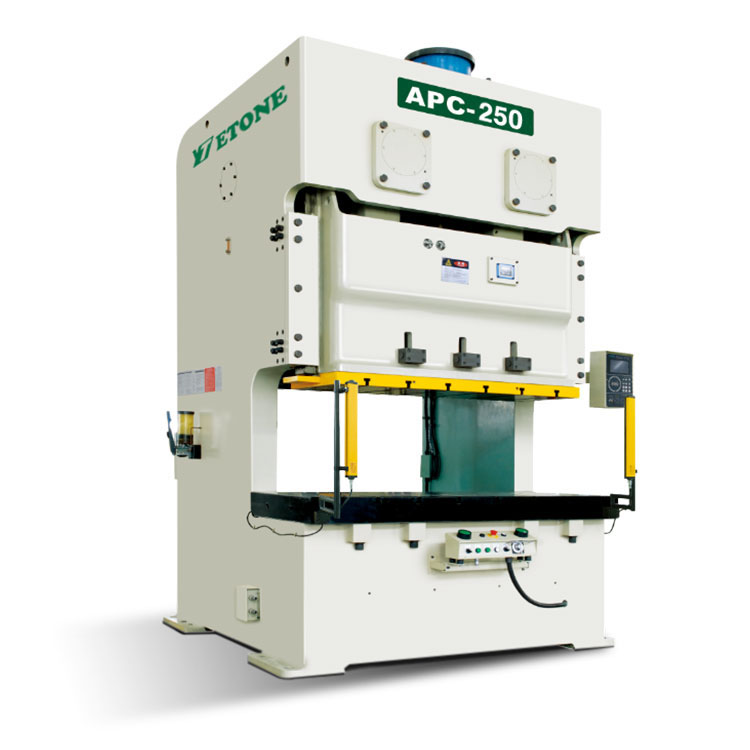The double crank press is a mechanical equipment used for metal forming and processing, and is widely used in processes such as stamping, pressing, and deep drawing. Its working principle is based on the movement of the crank mechanism. The following is a detailed working principle and structural description:
Working principle
Basic structure:
Crank: The main power source of the double crank press is the two cranks, which generate motion by rotation.
Connecting rod: The crank is connected to the workbench of the press by a connecting rod, which converts the rotational motion of the crank into linear reciprocating motion.
Workbench: The workbench is where the mold is installed and is used to place the material to be processed.
Pressure plate: When the crank rotates, the pressure plate moves downward under the action of the connecting rod, exerting pressure on the material.
Movement process:
Start: When the motor drives the crank to rotate, the two cranks start to move at the same time. Due to the connection method of the cranks, their movement is relative, which can generate greater pressure.
Up and down movement: The rotation of the crank drives the connecting rod to move up and down. The movement of the connecting rod causes the pressure plate to perform linear reciprocating motion on the workbench.
Forming process:
Downward: During the downward movement of the pressure plate, the material to be processed is clamped and pressed or impacted to start forming.
Upward: When the pressure plate reaches the lowest point, it will start to move upward to complete a working cycle.
Increased pressure:
The design of the double crank enables it to generate greater pressure during the downward process, which is very important for metal forming. Due to the change in the movement path and angle of the crank, the press can generate the greatest pressure at certain positions (usually the bottom of the downward movement).
Advantages
High efficiency: The double crank press can complete the forming process quickly and is suitable for mass production.
High pressure: Due to the movement characteristics of the crank, it can apply a lot of pressure, which is suitable for the processing of thick plates or high-strength materials.
Stability: The double crank design provides good mechanical stability and reduces vibration and noise during operation.
In summary, the double crank press converts the rotational motion of the crank into the linear reciprocating motion of the pressure plate, and takes advantage of its structural design to perform metal forming operations efficiently and stably. This kind of mechanical equipment plays an important role in industrial production.
